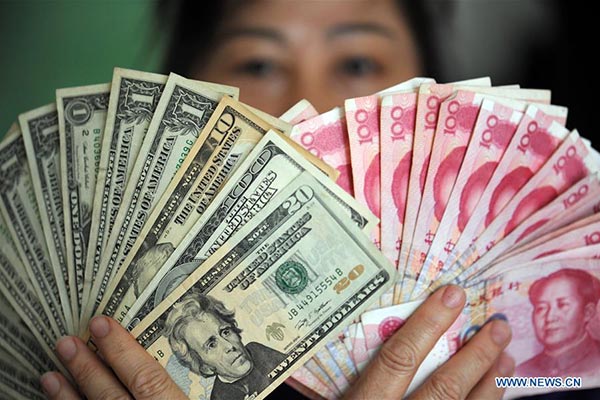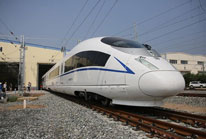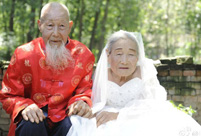


Aug. 11 is the anniversary of the most recent round of the RMB exchange rate regime reform. The central parity rate of the yuan against the U.S. dollar has dropped by 8.8 percent.
The past year has witnessed three rounds of fluctuation in the yuan.
Three days after the exchange rate reform on Aug. 11, 2015, the central parity rate of the yuan against the dollar slumped down to 6.4. Between December 2015 and January 2016, the offshore exchange rate of the yuan plummeted, dragging the onshore exchange rate from 6.49 down to 6.52. The offshore and onshore exchange rates fell 1.47 percent and 1.74 percent respectively in the first week of 2016.
The third depreciation was closely tied to international markets. Expectations for the interest increase of the Federal Reserve impacted the rate of the yuan against the dollar in May, and Brexit only worsened the situation. Mid-July witnessed the exchange rate drop below 6.7. Recently, the exchange rate of the yuan has begun to bounce back.
The cost of reform
Costs always accompany reform. The reduction of the foreign reserve is frequently mentioned as one such cost. The foreign reserve lost an average of $40 billion monthly last year, declining from $3.65 trillion in July 2015 to $3.20 trillion in July of this year.
Another change is the offshore RMB exchange rate. With the exchange rate reform, the gap between offshore and onshore exchange rates has narrowed. The consideration that domestic banks get engaged in the offshore RMB business will further weaken the influence of the offshore market.
As the largest offshore RMB market, Hong Kong’s RMB pool has returned to its volume of three years ago. The circulation of the market has shrunk by one-quarter, or 26 billion yuan. According to statistics from the Hong Kong Monetary Authority, by the end of June, the RMB balance in Hong Kong had decreased to 71.15 billion yuan, down 2.8 percent to the same level from August 2013.
On Aug. 11 2015, the People's Bank of China changed the way it calculated the yuan central parity rate, to close the gap between the rate and the actual trading rate on money markets. The central parity rate now takes into account the previous day's inter-bank market closing rate, supply and demand and the price movements of other major currencies.
 World's fastest bullet train to start operating next month
World's fastest bullet train to start operating next month Huangluo: China's 'long hair village'
Huangluo: China's 'long hair village' Spectacular bridge with one of the tallest piers in the world
Spectacular bridge with one of the tallest piers in the world Magnificent view of Hukou Waterfall
Magnificent view of Hukou Waterfall A glimpse of Stride 2016 Zhurihe B military drill
A glimpse of Stride 2016 Zhurihe B military drill US Navy chief tours Liaoning aircraft carrier
US Navy chief tours Liaoning aircraft carrier Chinese American woman wins Miss Michigan
Chinese American woman wins Miss Michigan Centenarian couple takes first wedding photos
Centenarian couple takes first wedding photos Traditional Tibetan costumes presented during fashion show
Traditional Tibetan costumes presented during fashion show Top 10 livable Chinese cities
Top 10 livable Chinese cities Top 20 hottest women in the world in 2014
Top 20 hottest women in the world in 2014 Top 10 hardest languages to learn
Top 10 hardest languages to learn China’s Top 10 Unique Bridges, Highways and Roads
China’s Top 10 Unique Bridges, Highways and Roads THAAD cripples UN unity on NK nukes
THAAD cripples UN unity on NK nukes Caterpillar fungus no longer worth its weight in gold
Caterpillar fungus no longer worth its weight in gold Images of Chinese athletes in Rio breaking stereotypes against Asian males
Images of Chinese athletes in Rio breaking stereotypes against Asian males Will World Heritage list do more harm than good for China’s Shennongjia Forestry District?
Will World Heritage list do more harm than good for China’s Shennongjia Forestry District?Day|Week